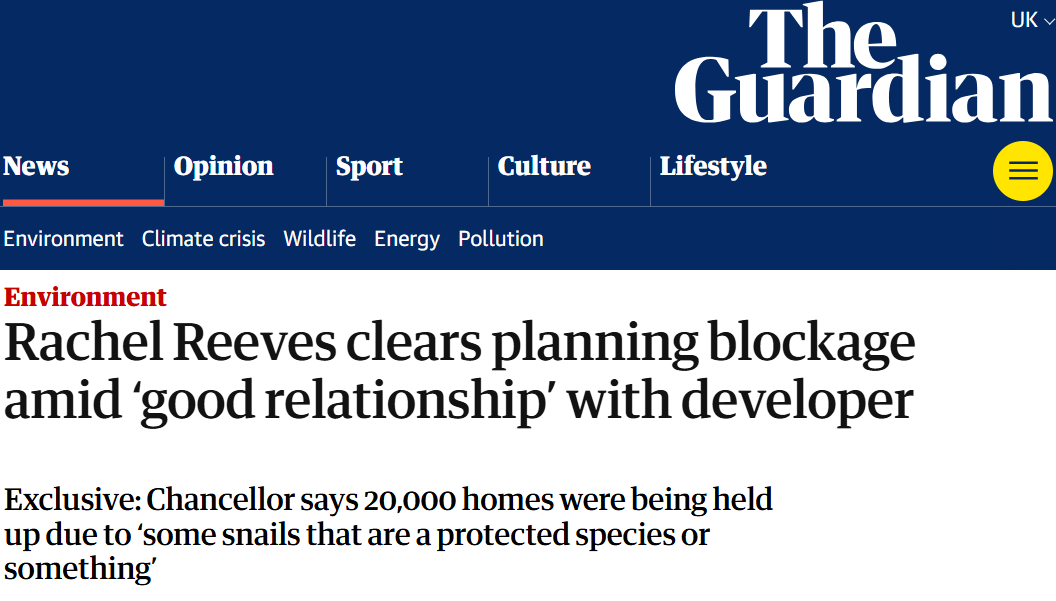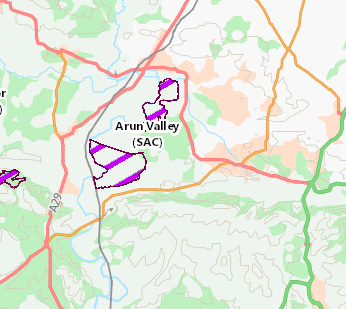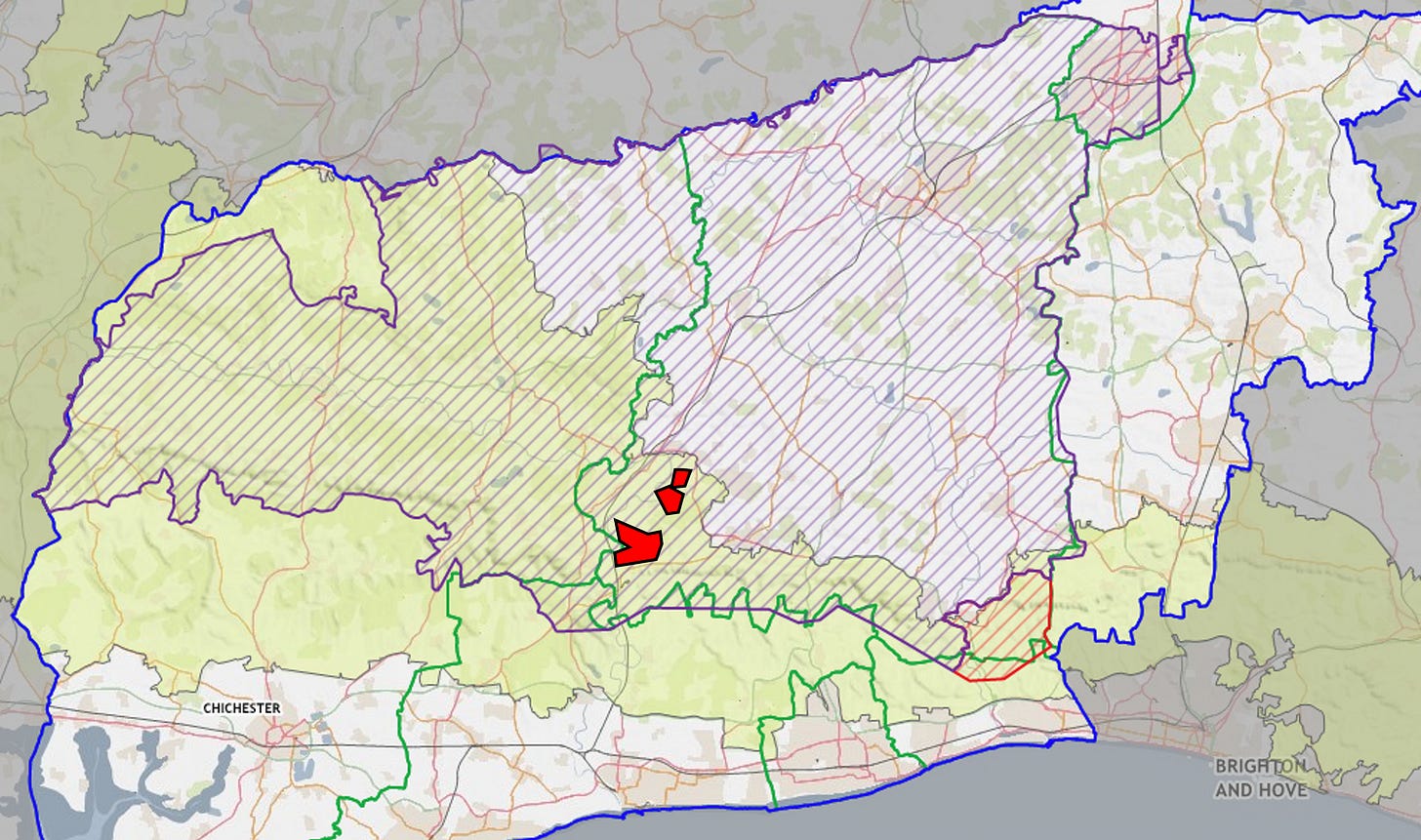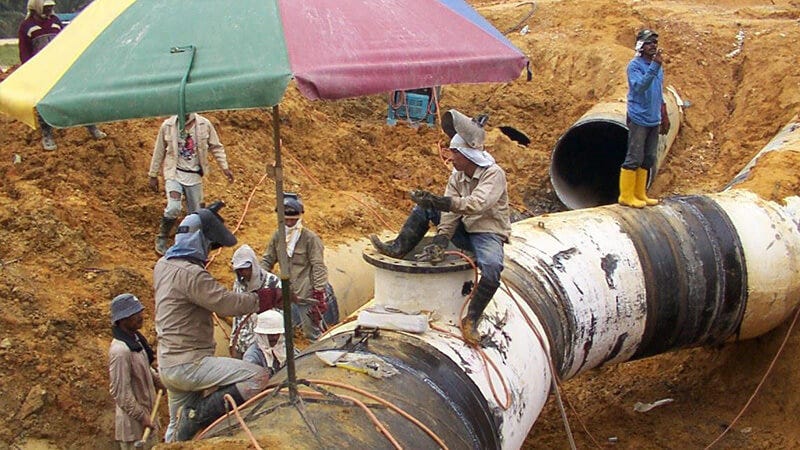Note: a fortnight ago I broke one of my rules, and didn’t manage to put my thread on Gatwick up on the substack. That’s now fixed, though after enough of a delay I couldn’t do a push email and look myself in the mirror. If you want to learn how we’ve managed to sabotage the first proper runway in the South East in 80 years, you’ll find it here
The Guardian is warning that the Chancellor is about to unleash a tide of destruction against protected snails. According to the people interviewed, this will be a disaster, a crime against justice and science.
This is apparently due for announcement later this week. But if this is referring to what I think it is, you might have more sympathy for Rachel Reeves than you expect based on the headline.1 And along the way, let me teach you how to seize control of half a county with a sheet of A4.
From the river to the source
The reports say that 20,000 houses in Sussex are being blocked by snails. You might have an image of a beautiful woodland that will soon be torn apart by bulldozers and turned into faceless suburbs. Snails crushed under caterpillar tracks. That’s not what’s being talked about here.
Instead, it’s a story about a very specific type of snail: the little whirlpool ramshorn snail. You might remember them from my post about the Acle Straight near Great Yarmouth, where they’d put an endless hold safety improvements on a road that killed six while we worked out the mitigation. It’s an understatement to say they’re fiercely protected.
And the best place in England to find them is a protected site in the Arun Valley in Sussex.2 And – good news – there’s no plans to build anything on it. In fact, given it’s an SAC, an SPA and a Ramsar site, you’ve got a better chance of turning Stonehenge into a Little Chef.
But Natural England worry about this site. The ramshorn snail is rare, and there are obligations to look after its habitat. And they worry about the amount of water coming to the site. If it gets too dry, peatland could dry out and the snails could suffer.
So in 2021, they sent a letter to local stakeholders saying they had to take action. For one side of A4, it does a lot. It informed everyone that there might be a threat to the Arun site. They were obliged to prevent any damage. So, to make sure no damage occurred, from now on everyone wanting to build anything upstream from the snails would need to prove they weren’t going to use any additional water.
ANY additional water.
I suspect that, if asked, Natural England would be terribly apologetic. They say they are compelled by laws (EU ones which we consciously kept after Brexit) to do everything they can to protect these environmental sites. And they really do mean everything.
But it’s a bit tricky for housebuilders. Because one of the things people in houses do is drink water. Sometimes several times a day. The fancier ones have also been known to wash clothes, flush toilets and make cups of tea. And that is banned unless it is offset by cuts elsewhere.
How widely did this apply? An area of about 350 square miles.3
Here’s a map. The affected area is hashed out, and covers about half the county of West Sussex, including most of three district councils. It’s 0.7% of the total land area of England, if you’d rather think of it that way. 250-300k people live there.
That little patch of red in the middle is the site being protected.
Finding a fix
Fortunately, there are things you can do to save water. For example, the local council recommends hooking up pipes so you can run your washing machine on rainwater. You can pay farmers to farm less. Whitehall is helping by mandating that new appliances have water efficiency labels, because every little helps.
But, as things stand, no one appears to have stood up and said ARE YOU COMPLETELY INSANE!?! Which seems like a missed opportunity.
First and foremost, we’re trading off the protection of an environmental site against the greatest essential of life – water – for our fellow citizens. If the snails have a right to water, the people do as well.
Second, Natural England isn’t saying the site is damaged by lack of water. They’re saying that they’re _not_ sure it _isn’t_ being damaged. Before they broke half a county, it might have been a good idea to check. And if they do decide to take action, the next step should be finding sensible balances that limit the harm to the public. Not jumping straight to the option that takes over the water of half a county with a letter.
Third, there are these things called pipes. This is a bit of a lost technology in the UK – we accidentally broke reservoir construction in the 1970s – but an NGO like WaterAid can fly in some experts and show us what to do.
But lastly, and most important – this is a democracy.
No bureaucrat should imagine they have the right to unilaterally take control of the water of half a county. To limit who gets to drink.
And the system watching those bureaucrats is responsible for intervening if they try. So, full marks to the Chancellor for doing precisely that.
And to the journalists at the Guardian – if you go for a glass of water between articles saying that housebuilding is a conspiracy of private capital, remember that the water you’re drinking is only yours if Natural England decides the snails don’t need it first.
The Guardian really isn’t pulling any punches at the moment
And yes - this is about snails and not biodiversity more generally. See https://sac.jncc.gov.uk/site/UK0030366 for details




